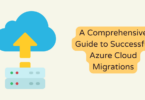
Are Your Current Reports Suited For Top Management?
Today’s managers seek more than figures and numbers to satiate their understanding of performance reports. Insights have become a vital part of the reporting culture to assess business scenarios and help drive performance. Reports are expected to be charted out in a way that facilitates decision-making and suggests executable strategies.
A survey conducted by Deloitte among more than 160 companies across eight industries and 15 countries displayed the transitioning expectations of top management reporting, further highlighting the principal challenges that organizations will need to bridge in order to deliver on these expectations. The survey also emphasized the top management expectations from the finance function to advance from providing pure numbers and financial information to mapping out appropriate analysis of credible information. Besides the information derived internally, top management now expects the reports to also contain additional and relevant material from the external environment that could impact the company’s performance.
Relevant data is also time-bound and needs to be analyzed on the clock, but the survey suggests that only 24% of the time is spent on the analysis of reports and actionable strategies. One of the main reasons for the lack of time spent understanding reports is that more time is spent on low value-added activities such as creating reports. To meet the expectations of top management reporting, it is essential to spend more time on analysis, reduce the cost of reporting and improve efficiency with quality assurance. Many companies are now relying on AI-driven business intelligence technology, such as Phrazor, to enhance the productivity of the workforce and produce automated reports.
Why is reporting necessary to support the decision-making process?
The task for a CFO to get insightful reports they need to make effective decisions can be quite daunting. There are two broad ways in which management reporting can fail – either the reports are fat and abound with statistics, heavy on data, but light on insights, or they are overly siloed with each function tallying up its own debits and credits without someone providing a moderate view of the macro picture.
Management reports should focus on trends that impact performance, whether it’s measured in terms of sales, revenue, production volume, on-time delivery, or any other essential metric. Reporting should further keep track of business drivers that affect value creation.
Importance of delivering reports at the right time with essential details
- Content flexibility: There needs to be an optimum balance between standardized reports published at specific and defined moments, certified by finance reporting responsible, and non-standardized reports that will offer meticulous insight when requested by top management. Flexibility will also make reporting more reactive to dynamic business environments.
- Effective governance: While there are concerns regarding the speed of delivery of management reports and the quality of these reports, 51% of the delivery departments often need to deliver a similar set of data many times. Hence, the role of defining an appropriate governance model is extremely critical to enhance the time spent on report creation and to fine-tune the quality of the reports produced. A balance with defined roles and responsibilities between centralized governance and decentralized governance needs to be established.
- Systems: Introducing a system of automated reporting comes with plenty of benefits, including speedy and quality reported information delivered. Automated reporting is favored over manual reports as it decreases the risks of errors prominently linked to the human factor. Additionally, it also fosters the emergence of myriad interpretations and definitions of a single concept. Implementing a highly advanced reporting system is essential and starts with the definition of the reporting data model. Here, the reporting dimensions and views are accurately defined. Assessment of the new data warehouse and availability of relevant reporting tools is also required, for which, augmented BI tools come in handy. An appropriate tool, such as BI-oriented Phrazor, will enable you to leverage transactional data and gain insights.
Five ways to improve management reporting
- Set a good example: The CEO and CFO should set the tone for more effective reporting by measuring the right elements, rewarding the desired behavior, establishing clear lines of accountability, and communicating values and responsibilities.
- Measure the right KPIs: Wrong KPIs will most likely offer results on wrong behavior. The functioning of dashboards, spreadsheets, and reports will not drive business objectives unless the metric measurement system encourages behavior to add value. Appropriate KPIs with an understanding of value drivers need to be put in place to enable the management reporting process to be dynamic and action-oriented.
- Tell a story with your data: As long as the information derived from the data is presented in the form of context, content, and meaning, it would help comprehend the data. A good management report should make a great example of storytelling with the help of historical data and KPIs.
- Make your report visually aesthetic: Spending too much time on data often leaves a person overwhelmed. This leads to decision fatigue which leads to a lack of productivity to think strategically in the team. By keeping the metrics to measure data in a lower range, one can gauge all the essential answers and help produce a comprehensive and structured report.
- Reports should reflect clarity: Be it business writing or management reporting, clarity is very important and the primary objective. People should be able to read and understand the reports produced and should also drive the key insights that would benefit the organization. Data-efficient data reporting will help management reporting be crisp and concise.
How Phrazor comes to the rescue with automated insights
Phrazor is an AI-powered augmented reporting automation platform that uses Natural Language Generation technology to provide end-to-end insights to business users. The self-service BI tool summarizes data into a few bullet points and highlights the essential insights useful for decision-making. Further, the tool also generates easy-to-understand human-like language narratives and automates the holistic process of data analysis, interpretation, and integration. Ready-to-use reporting templates from Phrazor curated by industry experts help multiple corporations across industries to improve their internal and external processes.
Some of the key features, such as its ability to be customizable, role-based access control, multilingual choices, interactive visualizations, multiple data integrations, and export/share/publish reports, help generate value-added automated insights to drive decision-making.
In a nutshell…
To meet the top management reporting expectations, creating a healthy ecosystem of a data-driven culture is essential. By empowering the workforce in organizations to be data literate, top management can reap the benefits of enhanced automated reports with insights that would facilitate warranted decision-making.
For the same, intelligent BI tools such as Phrazor can help meet top management reporting expectations through data storytelling. The tool follows the management reporting style of handpicking relevant KPIs defined by users to derive real-time data, create efficient dashboards, and produce actionable insights to drive businesses above their competitors. Learning how to use data and BI tools will fast-forward your business goals by years.
Get in touch with us to know more about Phrazor.
Product Walkthrough Demo:






